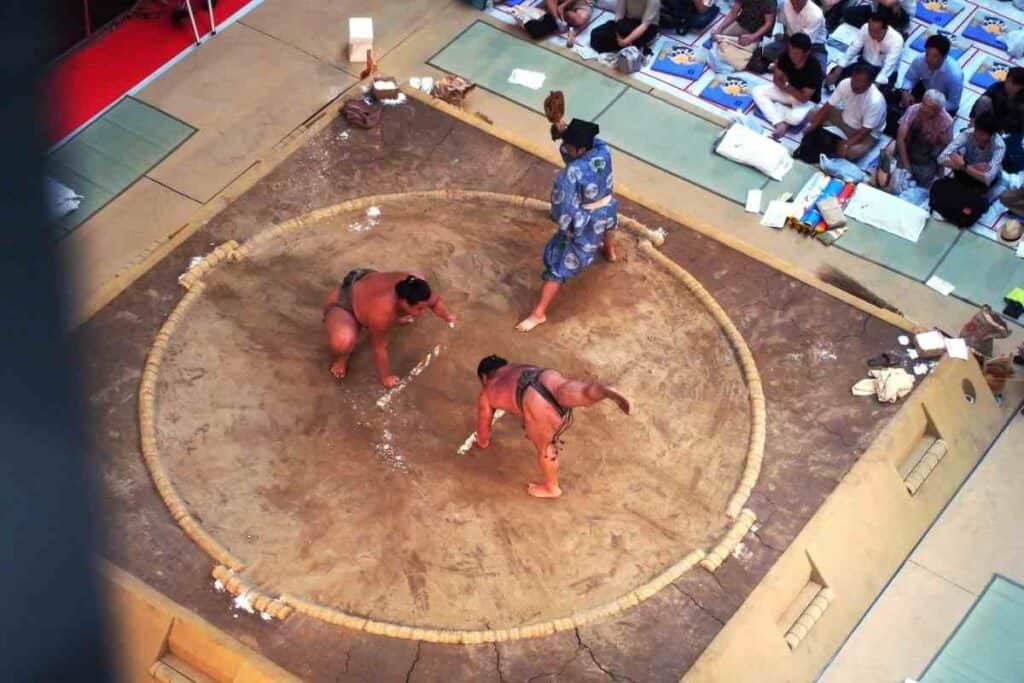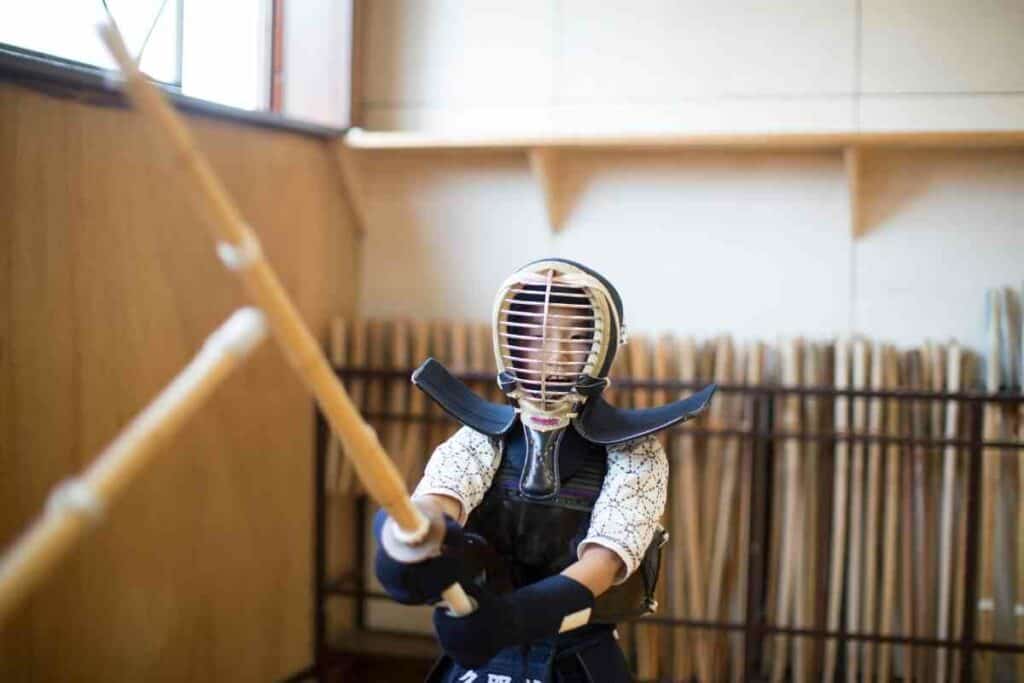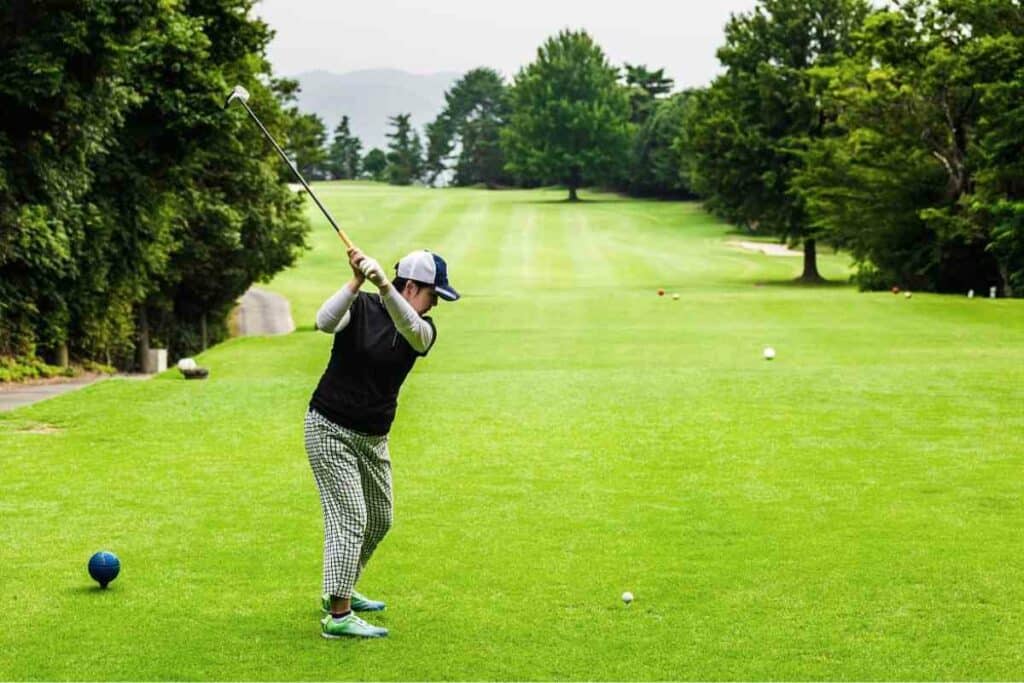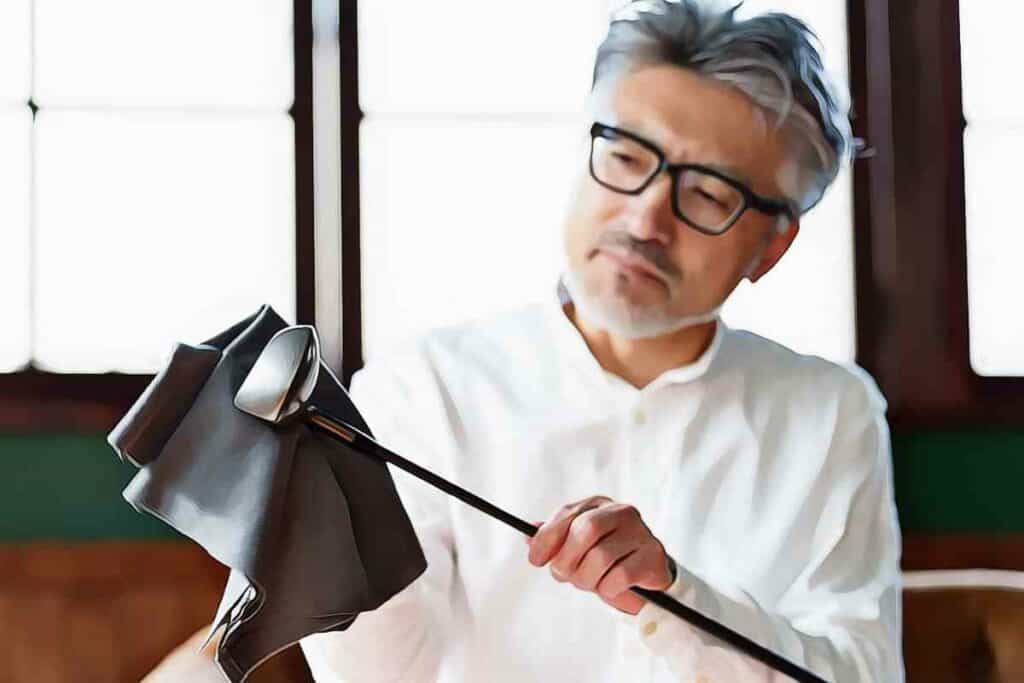Sumo is a 1500-year-old Japanese ritual that was made a national sport in 1909.
It started off as part of agricultural ceremonies to determine the success of farmers during planting seasons.
Thus, it is an important part of Japanese history.
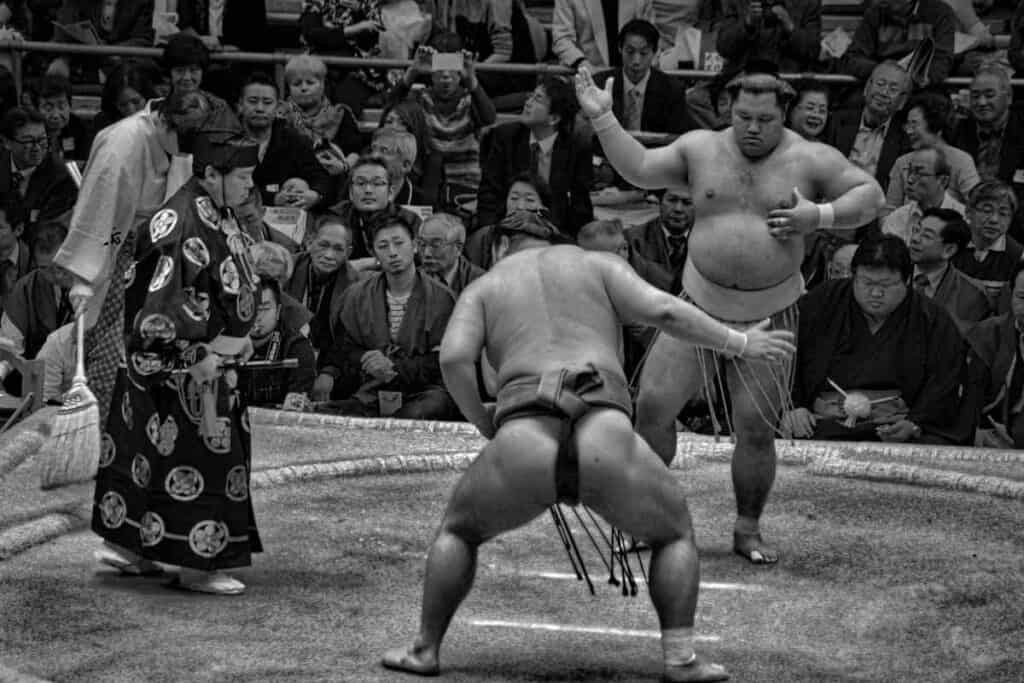
You could ask What Do Sumo Wrestlers Wear, but then you’ll get two answers becuase they obviously wear different clothes when wrestling and when not at work.
But the short answer is… Sumo wrestlers wear a loincloth with a belt and handles while wrestling. This cloth that only covers the genitals of the wrestlers is known as mawashi.
Sumo wrestlers, or the rikishi as they are referred to in Japan, also have unique hairstyles and footwear codes that they must adhere to.
Table of Contents
What Is a Mawashi?
Sumo is not complete without mawashi.
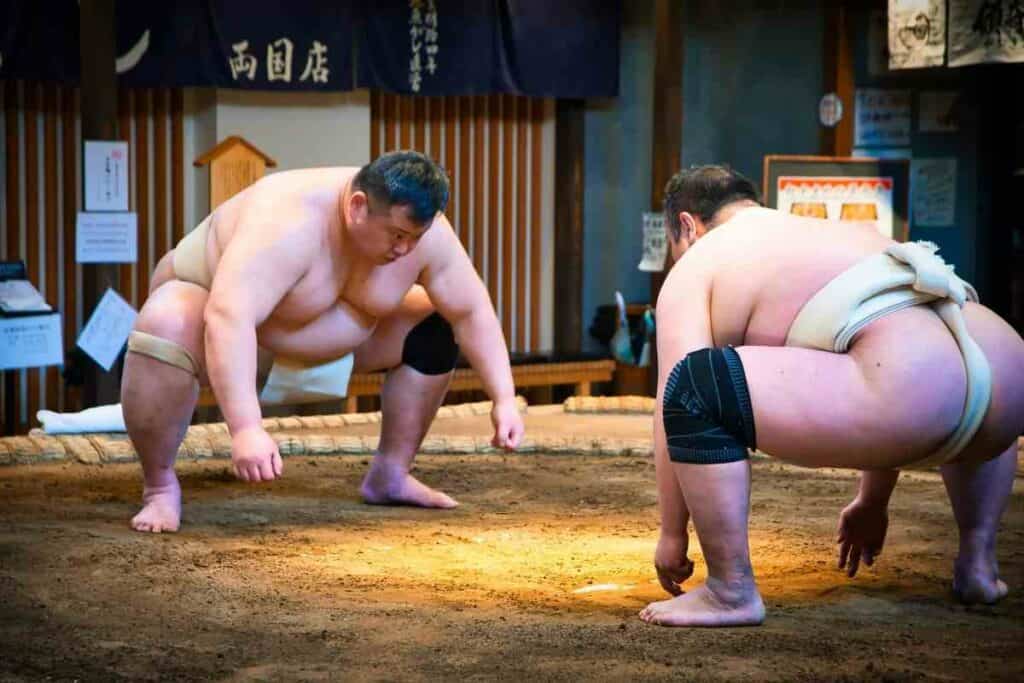
It is the official garment worn by the rikishi during sumo training sessions and official tournaments.
A mawashi is a loincloth designed with a belt and handles that wrestling opponents can grab and tackle each other.
Venture into the exquisite world of the Japan Objects Store, our esteemed partner renowned for an unparalleled collection of men’s clothing, kimonos, shoes, and accessories.
A standard mawashi is approximately 9 meters long when unwrapped, 0.6 meters wide, and about 5 kilograms heavy.
It is worn by wrapping it several times around a wrestler and fastening it in the back with a knot.
Booking.comAt times, the rikishi wears their mawashi in a way to have the upper hand against their opponent.
Thus, a wrestler could wear his mawashi tightly, loosely, or make it wet.
The way a wrestler puts on his mawashi could determine whether he wins or loses the tournament.
According to the Japanese Sumo Association: If a wrestler’s mawashi comes off during a wrestling match, he is automatically disqualified. While this never used to be the norm, the rule became applicable when Japan adopted the European view on nudity in games.
Types of Mawashi
There are different types of mawashi worn by the rikishi, depending on their ranks in the divisions of sumo wrestling.
Different mawashi come in different colors, materials, and designs. Even so, all rikishi wear canvas mawashi during training sessions.
Lower-Ranked Rikishi (Makushita)
The lower-ranking sumo wrestlers wear black cotton mawashi during tournaments.
Others wear mawashi of the color theme of their training schools.
Also, you can recognize a makushita from the way they fold the front end of their mawashi- they tuck it below the belt to form a triangular shape.
Higher Ranked Rikishi (Sekitori)
The sekitori wear white mawashi during tournaments.
Instead of cotton, their mawashi is made with the more prestigious silk material.
Wrestlers of the higher division tuck the front end of their mawashi at the top of their white belt to create a toilet-paper roll shape.
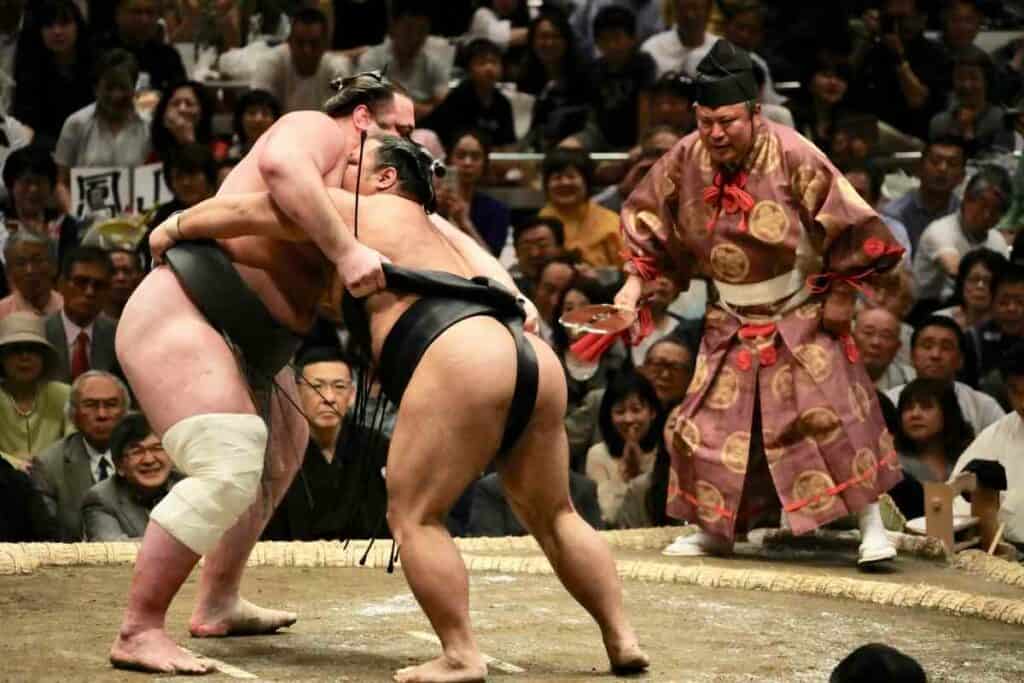
Upper ranked rikishi also put on a version of mawashi known as the kesho-mawashi. This type consists of a large apron with thick, colorful embroider and tassels at the bottom.
It is worn by the most accomplished or popular wrestlers during the ring entry ceremony. Often, a kesho-mawashi is used for advertising brands or, in the case of foreign rikishi, showcase their country’s flag.
Some of the mawashi worn by sekitori wrestlers have silk fronds the same color as the mawashi, inserted in the front.
Keep In Mind: The fronds are in odd numbers between 13 and 25. Also referred to as the sagari by the Japanese, the fronds mark the parts of the mawashi that wrestlers should not grab onto while fighting, like the groin.
Why Do Sumo Wrestlers Wear Mawashi?
Mawashi is such a minimalistic mode of dressing that leaves very little to the imagination.
Essentially, it only covers the wrestlers’ genitals. So, you may wonder why sumo wrestlers would not switch into something more modern and a little less revealing.
The dress code for sumo wrestling is ingrained in Japanese culture and history, so the mawashi has been maintained to honor culture.
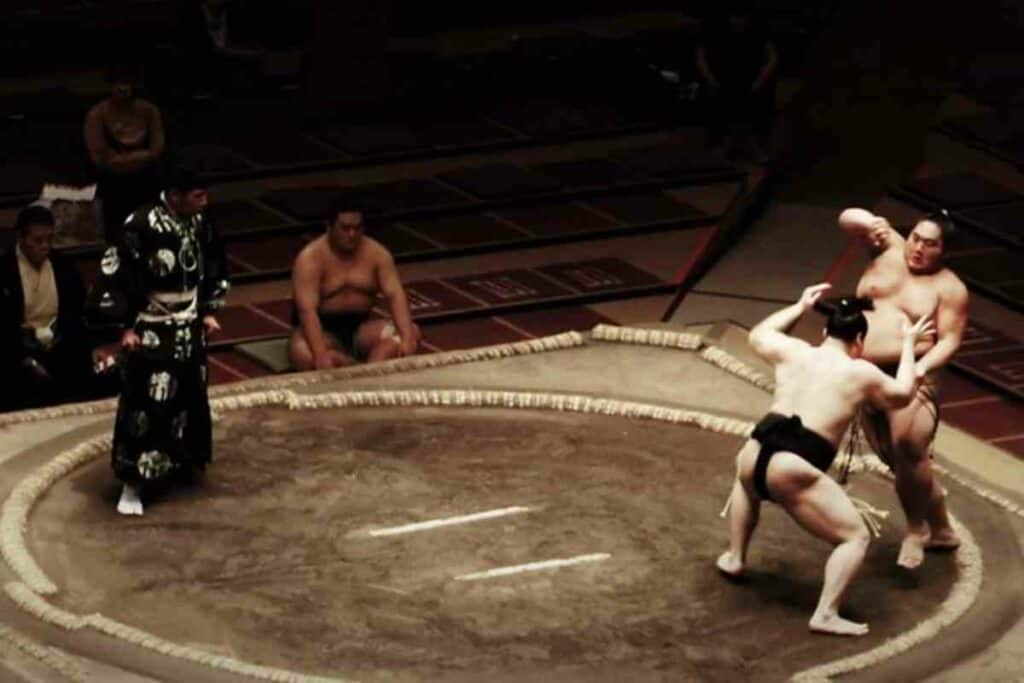
Sumo is associated with rituals in Shintoism that involve showing gratitude to gods and goddesses.
Thus, sumo wrestlers wear mawashi to prove to the gods that they are not cheating since they cannot hide weapons or commit fraud.
Apart from Culture – Mawashi indicate the rank of sumo wrestlers. They also set the rikishi apart from the other people. The rikishi are highly respected in Japanese circles.
Do Sumo Wrestlers Wear Anything Beneath the Mawashi?
No, the rikishi do not wear anything beneath the mawashi because, for one, it is prohibited.
Also, the mawashi is a historic attire, and wearing something under beats its significance.
So, the mawashi is the only garment allowed during a tournament.
The mawashi is specially designed to keep the wrestlers’ private parts covered, and that is it. Wearing them like that maintains the purity of the sport.
What Do Sumo Players Wear in Public?
Sumo players wear traditional Japanese attires or dressing gowns whenever they live their stables or the heya.
The rules dictate that a rikishi must wear a kimono or yukata when they are out in public.
High division wrestlers wear the kimono while the lower ranking wrestlers wear the yukata, which is a humble version of the kimono.
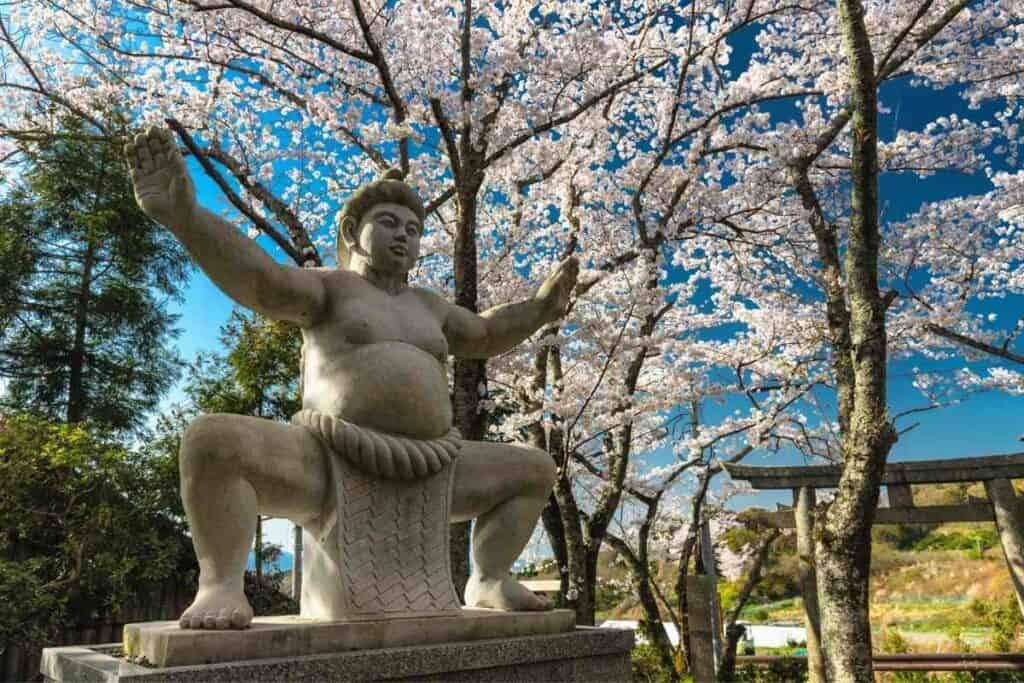
Elite rikishi wear silk kimonos whenever they leave the heya. The sekitori, who belong in the highest division, can wear embellished kimonos both inside and outside the heya.
About the Colors – Just like with the mawashi, yukatas and kimonos have color restrictions. Amateurs and lower division wrestlers wear white attires, whereas professionals can choose the color they want.
The elite rikishi put on purple and dark blue kimonos.
The Tsuna
A tsuna is an attire worn by a grand sumo champion, also known as a Yokozuna.
He(she) wears it when making private entrances during official tournaments. A tsuna is made up of a rope with five strands of diamond-shaped paper rectangles.
This attire gives the wearer a high status in society, equal to that of a semi-god. A Yokozuna wearing a tsuna earns the right to take part in a variety of religious ceremonies.
Hair Code
Sumo wrestlers wear a samurai-inspired topknot known as the chonmage.
On Special Occasions – High-ranked rikishi wear hair to resemble a gingko leaf, and the style is called oichmage.
Sumo wrestlers’ hair is done by special, well-trained barbers known as the tokoyama.
In Japan, being a tokoyama is a noble profession that requires 10-years of training before one can qualify to coif a wrestler.
Often, the profession is passed down within a family.
Footwear
Just like mawashi and attires, footwear for wrestlers depends on divisions too.
Lower-ranked wrestlers have the most stringent rules on footwear. The restrictions ease up as a rikishi ascents ranks to higher divisions.
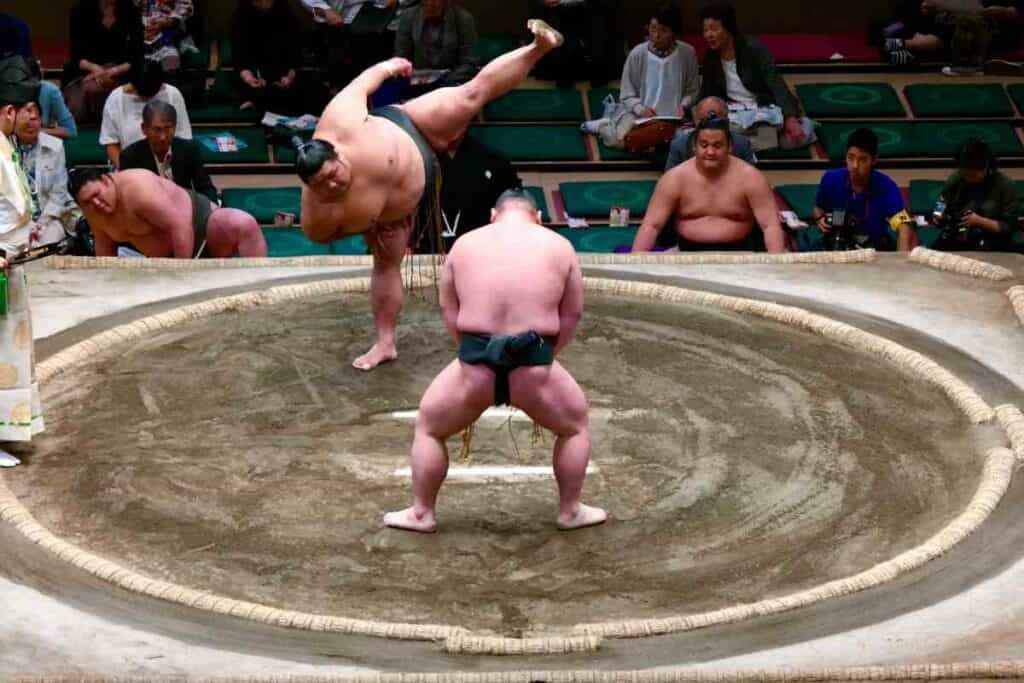
There are two main types of footwear worn by sumo wrestlers. The first is wooden sandals called geta, and straw sandals, locally referred to as zori.
Sumo wrestlers also wear iron shoes, the kurogane geta, which weigh about 5 kilograms. These shoes strengthen the legs, feet, and core muscles of the rikishi.
Mostly: The wrestlers wear this in their stables and don’t have to go outside with them.
Popular and best loved Sumo Wrestlers
There have been many famous and popular sumo wrestlers throughout history, but one of the most well-known is probably Chiyonofuji Mitsugu.
He was a legendary wrestler who won 31 tournament championships during his career, which spanned from the late 1970s to the early 1990s.
He was known for his incredible strength, agility, and technique, and was widely respected both in Japan and around the world. Other famous and popular sumo wrestlers include Taiho Koki, Akebono Taro, and Asashoryu Akinori.
Final Words
Sumo wrestlers put on loincloths called mawashi during the sport.
You would be amused to learn that this garment is never washed as they believe that water weakens the fabric and washes off accumulated good luck.
When not wresting, sumo wrestlers wear traditional Japanese attires- the kimonos and yukatas.
They wear clothes, hair, and shoes as per their ranks in the sumo hierarchy, which they are required to follow strictly both within and without their stables.

